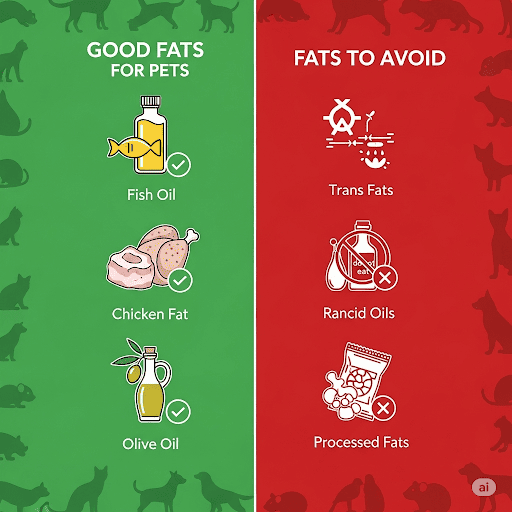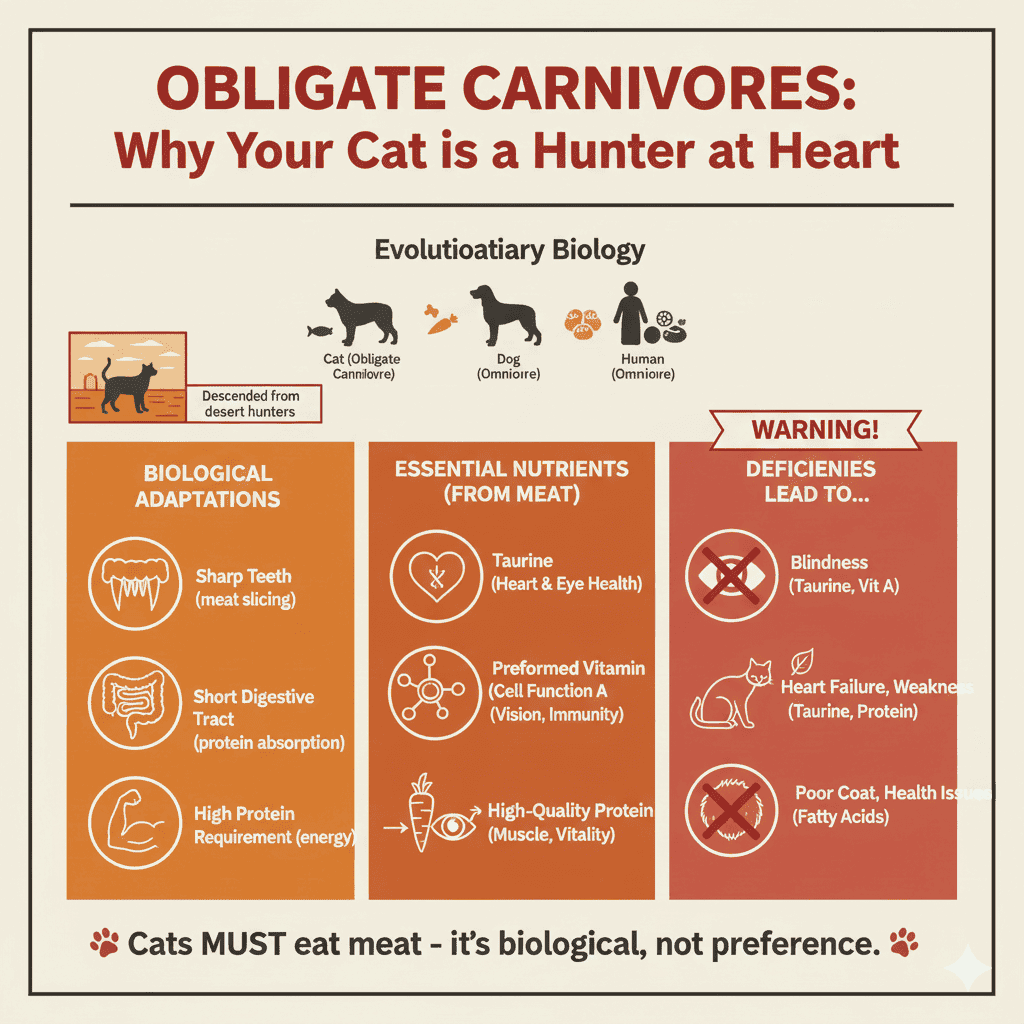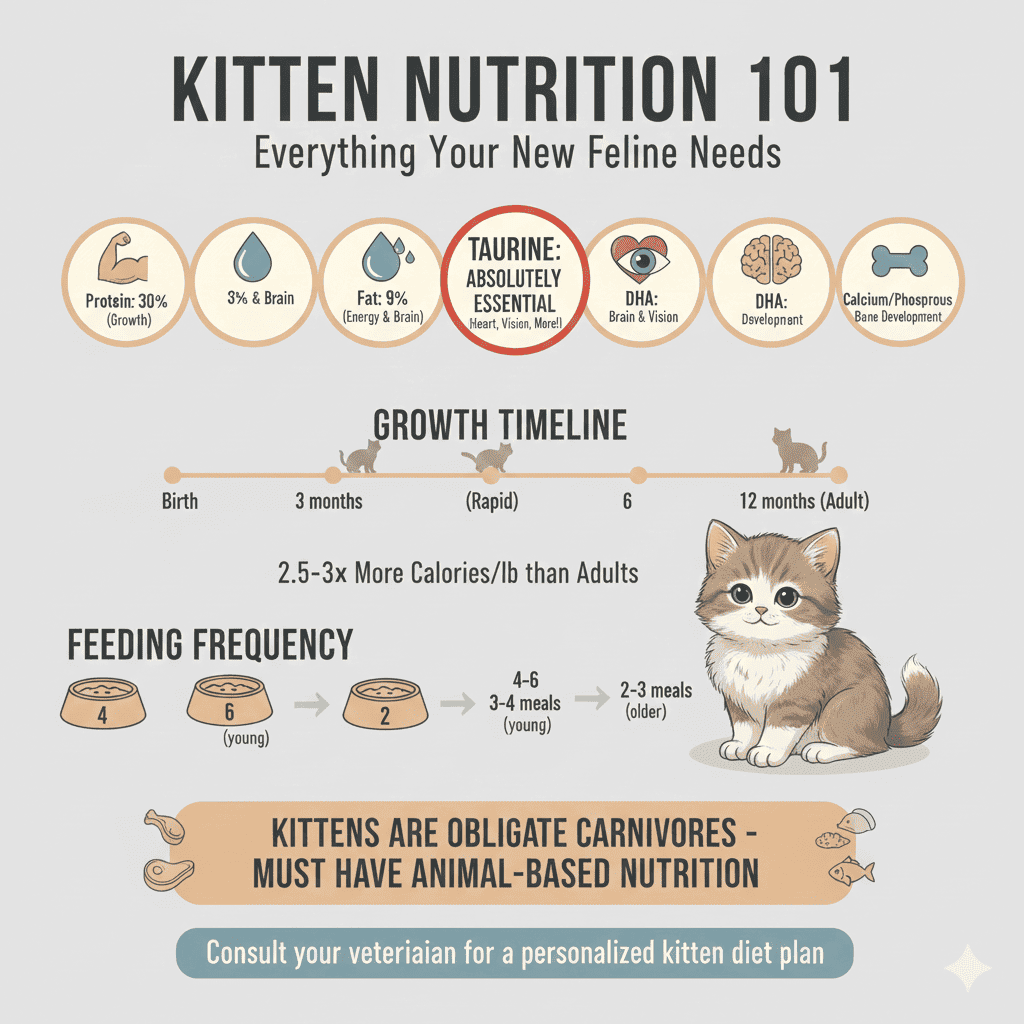Dogs are remarkable creatures of adaptation. While their wild ancestors were primarily carnivorous hunters, thousands of years of evolution alongside humans have transformed dogs into omnivores—animals that can thrive on a diverse diet including both animal and plant foods.
This dietary flexibility is one of the key differences between dogs and cats, and understanding it helps you make better feeding decisions for your canine companion. Your dog's ability to utilize nutrients from both meat and plants is a testament to their evolutionary success and their unique relationship with humans.
What Does "Omnivore" Mean for Dogs?
An omnivore is an animal that can obtain nutrients from both animal and plant sources. Unlike obligate carnivores (like cats), who must eat meat, omnivores have the biological flexibility to thrive on varied diets.
For dogs, this means:
- They can digest and utilize plant matter (unlike cats)
- They can synthesize some nutrients that cats cannot
- They have more dietary flexibility than their wild ancestors
- They can thrive on well-formulated plant-based diets (with proper supplementation)
However, this doesn't mean dogs are "vegetarians by nature" or that they don't benefit from animal-based foods. It means they have options—they can utilize both.
The Evolutionary Journey: From Wolf to Dog
The Wolf Ancestry
Dogs descended from wolves (Canis lupus), who are:
- Carnivorous hunters in the wild
- Primarily meat-eaters (though they do consume some plant matter)
- Designed for hunting large prey animals
The Domestication Transformation
When dogs began living with humans (approximately 15,000-30,000 years ago), their diet changed dramatically:
What changed:
- Access to human food waste: Grains, vegetables, cooked foods
- Selective pressure: Dogs that could digest diverse foods survived better
- Genetic adaptations: Evolution favored dogs with omnivorous capabilities
- Co-evolution with humans: Diet adapted to human lifestyle
Key genetic changes:
- Increased amylase production: Enzyme for digesting starches
- More copies of starch-digestion genes: Better ability to break down carbohydrates
- Adapted digestive system: Can handle both animal and plant foods
- Metabolic flexibility: Can use various energy sources
The Modern Dog
Today's dogs have:
- Wolves' carnivorous heritage: Still benefit from animal-based nutrition
- Omnivorous adaptations: Can utilize plant-based foods
- Dietary flexibility: Can thrive on varied diets
- Human-influenced evolution: Shaped by thousands of years with people

Biological Adaptations for Omnivory
Dogs have several biological adaptations that support their omnivorous nature:
1. Digestive System Adaptations
Longer digestive tract:
- Longer than cats (obligate carnivores)
- Allows more time for plant matter digestion
- More similar to omnivorous humans than carnivorous cats
Starch digestion:
- Amylase in saliva: Begins breaking down starches immediately
- Pancreatic amylase: High levels for carbohydrate digestion
- Multiple copies of AMY2B gene: Enhanced starch-digestion capability
- Efficient carbohydrate utilization: Can derive energy from grains and vegetables
Diverse enzyme production:
- Enzymes for protein digestion (like carnivores)
- Enzymes for fat digestion (like carnivores)
- Enzymes for carbohydrate digestion (unlike obligate carnivores)
2. Metabolic Flexibility
Multiple energy sources:
- Can use protein for energy (like cats)
- Can use fat for energy (like cats)
- Can use carbohydrates for energy (unlike cats)
- Can switch between energy sources as needed
Nutrient synthesis:
- Can convert some nutrients (unlike cats)
- Can synthesize some amino acids from others
- More efficient nutrient utilization from diverse sources
3. Dental Structure
Versatile teeth:
- Sharp canines: For tearing meat (carnivorous heritage)
- Pointed premolars: For shearing meat
- Flat molars: For grinding plant matter (omnivorous adaptation)
- Combination design: Supports both meat and plant consumption
4. Behavioral Adaptations
Dietary flexibility:
- Will eat a wide variety of foods
- Can adapt to different feeding schedules
- Less picky than cats (generally)
- Can thrive on commercial, home-cooked, or raw diets
Protein Requirements: Lower Than Cats, But Still Important
Minimum Requirements
- Adult dogs: Minimum 18% protein (dry matter basis)
- Growing puppies: Minimum 22% protein
- Cats (for comparison): Minimum 26% protein
Why Lower Than Cats?
- More efficient protein use: Dogs don't constantly break down protein for energy
- Can use carbohydrates: Don't rely solely on protein for energy
- Better protein conservation: Can reduce protein breakdown when intake is low
- More dietary flexibility: Can meet needs with varied protein sources
Quality Still Matters
Even though dogs need less protein than cats:
- High-quality protein is still important: Better amino acid profiles
- Animal proteins are preferred: More bioavailable and complete
- Plant proteins can work: But need proper combination and supplementation
- Digestibility matters: Higher digestibility = better utilization
Essential Nutrients: What Dogs Can and Cannot Synthesize
Nutrients Dogs Can Synthesize (Unlike Cats)
Taurine:
- Dogs can synthesize taurine from other amino acids
- Don't require dietary taurine (unlike cats)
- However, some breeds may benefit from dietary taurine
Arachidonic acid:
- Dogs can convert linoleic acid to arachidonic acid
- Don't require preformed arachidonic acid (unlike cats)
Niacin:
- Dogs can convert tryptophan to niacin
- More efficient conversion than cats
- Less dependent on dietary niacin
Vitamin A:
- Dogs can convert beta-carotene to vitamin A
- Don't require preformed vitamin A (unlike cats)
- Can utilize plant sources of vitamin A
Nutrients Dogs Still Need from Diet
Essential amino acids:
- 10 essential amino acids must come from diet
- Need complete protein sources (or proper combination)
Essential fatty acids:
- Linoleic acid (omega-6)
- Alpha-linolenic acid (omega-3)
- Some dogs may benefit from preformed EPA/DHA
Vitamins and minerals:
- Various vitamins and minerals required
- Can come from both animal and plant sources
Dietary Flexibility: What This Means for Feeding
Animal-Based Diets
Benefits:
- High-quality, complete protein
- Highly bioavailable nutrients
- Natural diet similar to ancestors
- Excellent for most dogs
Considerations:
- Can be more expensive
- Environmental considerations
- Ethical considerations for some owners
Plant-Based Diets
Possibility:
- Dogs can thrive on well-formulated vegetarian/vegan diets
- Requires careful formulation and supplementation
- Must ensure all nutrients are provided
Considerations:
- More challenging to formulate correctly
- Requires supplementation of some nutrients
- May need multiple plant protein sources
- Should be done under veterinary guidance
Important: While possible, plant-based diets for dogs require:
- Proper amino acid balancing
- Supplementation of key nutrients
- High digestibility
- Regular monitoring
Mixed Diets (Most Common)
Benefits:
- Combines best of both worlds
- Animal proteins for quality
- Plant foods for fiber, some nutrients, and cost-effectiveness
- Most commercial dog foods use this approach
Considerations:
- Balance is key
- Quality of ingredients matters
- Proper formulation essential
How This Differs from Cats
Key Differences
| Aspect | Dogs (Omnivores) | Cats (Obligate Carnivores) |
|---|---|---|
| Protein requirement | 18% minimum | 26% minimum |
| Carbohydrate digestion | Excellent | Limited |
| Plant matter utilization | Good | Poor |
| Taurine synthesis | Yes | No (must get from diet) |
| Vitamin A conversion | Yes (from beta-carotene) | No (must get preformed) |
| Arachidonic acid | Can synthesize | Must get from diet |
| Dietary flexibility | High | Very low |
| Vegetarian diet possibility | Yes (with care) | No (not safe) |
Why These Differences Matter
Understanding these differences helps you:
- Choose appropriate foods: Dog food vs. cat food
- Understand protein needs: Dogs need less, but quality matters
- Recognize dietary options: Dogs have more flexibility
- Avoid mistakes: Don't feed cat food to dogs long-term (too high in protein)
Practical Implications for Dog Owners
What to Look For in Dog Food
High-quality dog food should:
- Have animal protein as primary ingredient (preferred)
- Contain 18%+ protein (dry matter basis)
- Include both animal and plant ingredients (balanced approach)
- Be formulated specifically for dogs (not "all life stages" if you have specific needs)
- Meet AAFCO nutritional adequacy standards
Protein Sources
Excellent sources:
- Chicken, turkey, beef, lamb, fish
- Eggs
- High-quality meat meals
Good sources:
- Some plant proteins (when properly combined)
- Legumes, grains (as part of balanced diet)
Carbohydrate Sources
Dogs can utilize:
- Grains (rice, oats, barley, corn - when properly processed)
- Potatoes, sweet potatoes
- Legumes (peas, lentils, beans)
- Vegetables
Considerations:
- Quality and digestibility matter
- Some dogs may have grain sensitivities
- Carbohydrates should be part of balanced diet, not the majority
Special Considerations
Puppies:
- Higher protein needs (22%+)
- Need for growth and development
- More calories per pound
Senior dogs:
- May need slightly more protein to prevent muscle loss
- Lower calorie needs (less active)
- May benefit from higher-quality protein
Active/working dogs:
- Higher calorie needs
- May benefit from higher protein
- Need adequate carbohydrates for sustained energy
Overweight dogs:
- Don't reduce protein (maintain muscle)
- Reduce fat and carbohydrates
- Increase fiber for satiety
Common Misconceptions
Misconception 1: "Dogs are carnivores like wolves"
Reality: While descended from wolves, dogs have evolved to be omnivores. They have genetic adaptations for digesting starches that wolves don't have.
Misconception 2: "Dogs should eat only meat"
Reality: Dogs can thrive on balanced diets including both animal and plant foods. Meat-only diets may be unbalanced and expensive.
Misconception 3: "All plant-based diets are bad for dogs"
Reality: Well-formulated vegetarian/vegan diets can work for dogs, though they require careful formulation and supplementation.
Misconception 4: "Dogs and cats have the same nutritional needs"
Reality: Dogs and cats have very different needs. Dogs are omnivores; cats are obligate carnivores.
The Bottom Line
Dogs are remarkable omnivores—the product of thousands of years of evolution alongside humans. This gives them dietary flexibility that their wild ancestors and their feline counterparts don't have.
Understanding your dog's omnivorous nature helps you:
- Appreciate their dietary flexibility
- Make informed food choices
- Understand why they can eat diverse foods
- Recognize that quality still matters, even with flexibility
- Avoid the mistake of thinking they're "just like cats"
Your dog can thrive on a well-balanced diet that includes both animal and plant foods. The key is balance, quality, and meeting all their nutritional needs—whether those nutrients come from meat, plants, or both.
Ready to create a meal plan that honors your dog's omnivorous nature? Use our pet meal planner to find balanced, high-quality foods that meet your dog's unique nutritional needs.
For more information on how cats differ from dogs, see our article: Obligate Carnivores: Why Your Cat is a Hunter at Heart.


